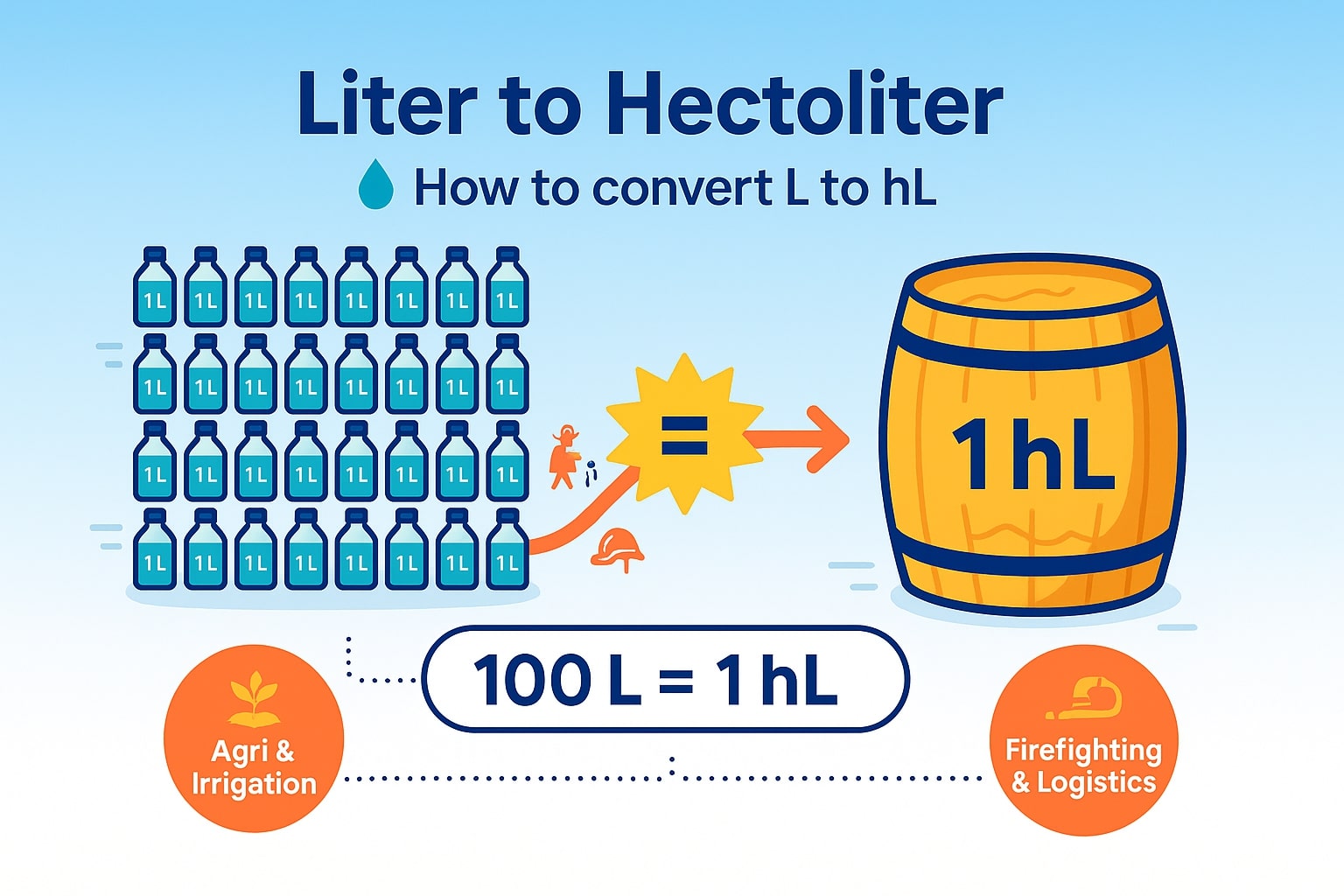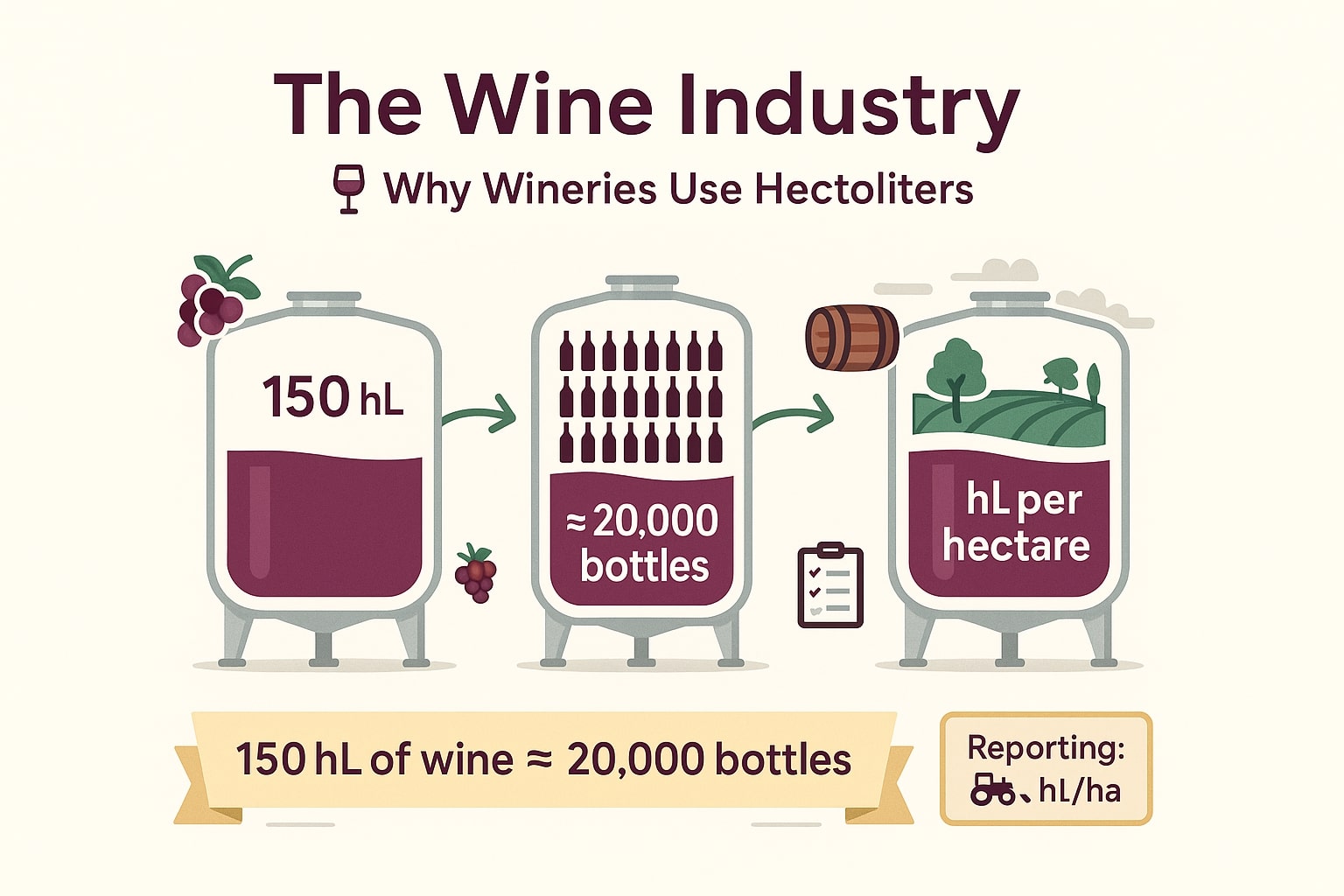liter to hectoliter – How to convert L to hL
Converting from liter to hectoliter is a common task in industries where liquid volume is measured in large quantities—such as agriculture, beverage production, or even firefighting logistics. These two units are part of the metric system, so converting between them is easy and precise.
This guide explains the conversion formula, offers examples you can relate to, and shares facts that highlight the value of using hectoliters for large-scale measurements. If you need help with other units too, check out the Volume Converter for all volume-related needs, or browse a wide range of tools in our Conversion Tool. For smaller measurements, you might find Liter to Cubic Millimeter or Liter to Cubic Centimeter conversions helpful.
What is a Liter?
A liter (L) is one of the most widely recognized units for measuring volume, especially for liquids. While it isn't an SI base unit, it is accepted in the metric system and used across everyday applications—from groceries and beverages to science labs and automotive fluids.
Quick facts about liters:
-
1 liter = 1,000 milliliters (mL)
-
1 liter = 0.001 cubic meters (m³)
-
1 liter ≈ 0.264 US gallons
Because of its scalability, the liter is ideal for small- to medium-volume tracking. But once you start dealing with hundreds or thousands of liters, a more convenient unit—like the hectoliter—can help simplify things.
What is a Hectoliter?
A hectoliter (hL) is a metric unit equal to 100 liters. It’s typically used in situations where fluid volumes become large enough that expressing them in liters becomes cumbersome. You may not encounter hectoliters in everyday tasks, but they’re standard in commercial, agricultural, and industrial settings.
Common applications include:
-
Breweries measuring beer production
-
Wineries tracking fermentation output
-
Dairy farms measuring milk storage
-
Bulk liquid transport and storage
-
Emergency water supply planning
With 1 hL equal to 100 L, it’s a clean and effective way to express large volumes with fewer digits.

How to Convert Liter to Hectoliter
The conversion is straightforward and requires no special tools:
Formula: hL = L ÷ 100 or 1 L = 0.01 hL
Example: If a farm’s water tank holds 3,000 liters: 3,000 ÷ 100 = 30 hectoliters
Using hectoliters makes high-volume data easier to read and manage, especially in documentation, reporting, and industry standards.
Did you know?
-
A medium-sized brewery may produce over 500 hectoliters per week—that’s 50,000 liters of beer. Keeping records in hL simplifies logistics and sales reporting.
-
A typical dairy cow produces about 25 hL of milk each month. For a herd of 100 cows, that’s 2,500 hL—a much simpler number than 250,000 liters.
-
The wine yield in French vineyards is regulated and often capped at around 50 hL per hectare. This limit ensures both sustainability and flavor quality.
-
A fire truck in rural communities may carry up to 30 hL of water to respond to emergencies, especially where fire hydrants aren’t available.
-
A tomato processing plant might use over 400 hL of water daily for washing produce—roughly 40,000 liters per shift.
The Wine Industry
In regions like Tuscany, Napa Valley, and the Rhône Valley, wineries use hectoliters as a standard volume unit. It helps them estimate production, fermentation capacity, and bottle output. For example, if a tank holds 150 hL of wine, it can yield approximately 20,000 standard bottles.
Hectoliters are also used for regulatory reporting. Wine quality and yield controls often require reporting by hL per hectare to ensure standards are met and to prevent overproduction.
The use of this unit offers both precision and practicality—streamlining reporting and communication throughout the industry.

Conclusion
Switching from liter to hectoliter makes working with large fluid volumes far more manageable. Whether you're running a vineyard, bottling a new batch of craft beer, or delivering bulk fluids across regions, this conversion helps simplify large data sets.
To make your work even easier, try our Volume Converter for quick calculations, or explore everything from area to energy in our complete Conversion Tool. For more detailed or precise tasks, don’t forget to visit our Liter to Cubic Millimeter and Liter to Cubic Centimeter tools.
Jetcalculator helps you turn numbers into clarity—no matter the scale of your project.

